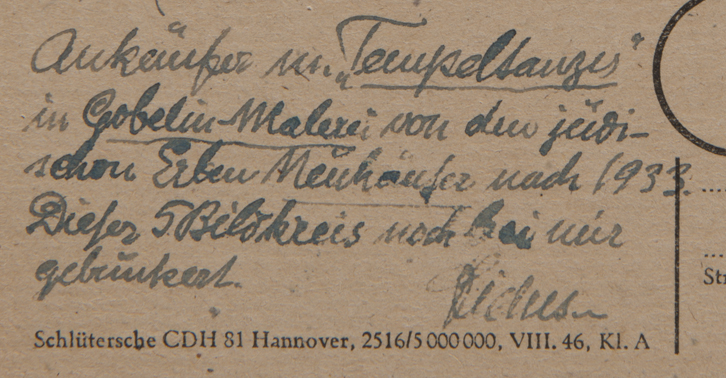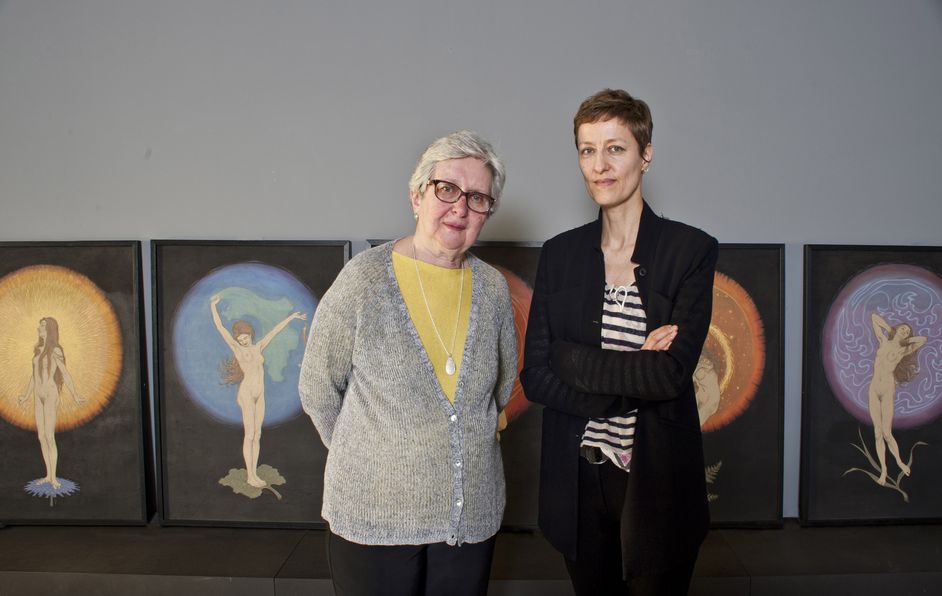It takes sound investigative skills to be a provenance researcher. Digging up information about the origin of an art work calls for genuine detective work. A big issue for many museums is whether they have anything in their collection that was stolen or extorted from its owners under the Nazi regime. Finding that out often calls for painstaking research, and it can be just as exciting as a crime novel.
“Temple Dance of the Soul” by the German Jugendstil artist Fidus, whose real name was Hugo Höppener (1868–1948), was a case in point for the Berlinische Galerie. The five-part cycle of paintings was one of the first works purchased for our collection in 1974. The vendor was a great admirer of Fidus and it seemed likely that the man had acquired the work straight from the artist. But then Dr Wolfgang Schöddert, a provenance researcher at the Berlinische Galerie, discovered a suspicious postcard among Höppener’s posthumous papers, which were also kept at our museum. On this card, which the owner sent to the artist in 1947, Fidus noted that the man had bought the work “from the Jewish Neuhäuser heirs after 1933”.

Schöddert delved into the fate of the Neuhäuser family and stumbled across a dramatic story: Richard Neuhäuser, a factory owner in Berlin, and his wife Meta had commissioned the cycle from Fidus in 1910. Meta died in 1928, Richard and their daughter Gabriele had been persecuted after 1933 on account of their Jewish descent and had lost all their rights. Richard Neuhäuser sensed the imminent threat and took his own life in 1935. His daughter escaped to Australia. Someone had been interested in buying “Temple Dance of the Soul”, but the sale had taken place under life-threatening pressure during the National Socialist dictatorship. Gabriele Neuhäuser had been obliged to leave other family assets behind too.

Rayna Patton, Granddaughter of Richard Neuhäuser (who commissioned the paintings) and Dr. Stefanie Heckmann, Head of the Department of Fine Arts Berlinische Galerie, in front of the cycle "Temple Dance of the Soul" by Fidus (Hugo Höppener)
© Foto: Ralf Herzig, © Fidus, VG BILD-KUNST Bonn, 2017With this knowledge Schöddert sought out the heirs, a difficult enterprise as there is no formal system in Australia for recording addresses. Eventually the researcher hit upon a trail in Web-based social networks that led him to the two daughters of Gabriele Neuhäuser in Australia and the United States. They were surprised and touched by the news from Berlin. Our museum was able to give “Temple Dance of the Soul” back to the collector’s grand-daughters and then, after this restitution, repurchase it – a just and fair solution and a gesture of reconciliation in which we and our visitors take some pleasure.